Mary Magdalene
Her legendary beauty and the important role that she played in the life of Christ, have ensured that Mary Magdalene has retained a prominent position in Christian art since the Middle Ages. Early Christian and medieval writers invented a history of her life prior to her meeting Christ and a series of adventures after his Ascension. By the Middle Ages the former prostitute from the Holy Land who died as a hermit in Southern France, had become a personification of penitence.

In Rossetti's drawing, Mary Magdalene at the house of Simon the Pharisee [2151] we see the moment of her conversion from a life of pleasure to one devoted to Christ. She sheds the garlands of roses from her head, transfixed by the divine face staring at her from the window. A sculpture made by the Italian Pompeo Marchesi in 1832, now in the Fitzwilliam, below [M.7-1974], depicts a similarly glamorous yet contrite Magdalene.
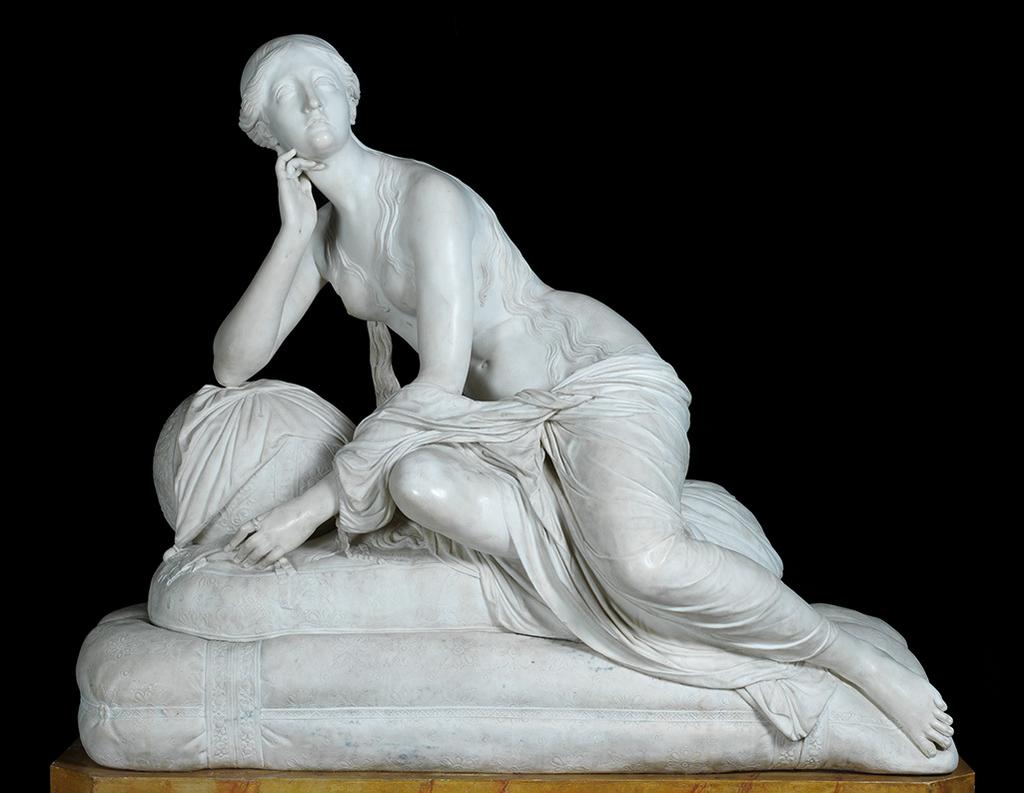
Even in her subsequent life as a hermit, Mary's good looks shine through. Annibale Carracci's painting in the Fitzwilliam,[PD.12-1976], has many of the elements which came to characterise the saint: the skull, the book, her tears of penitence and loneliness within a landscape, and her beauty.
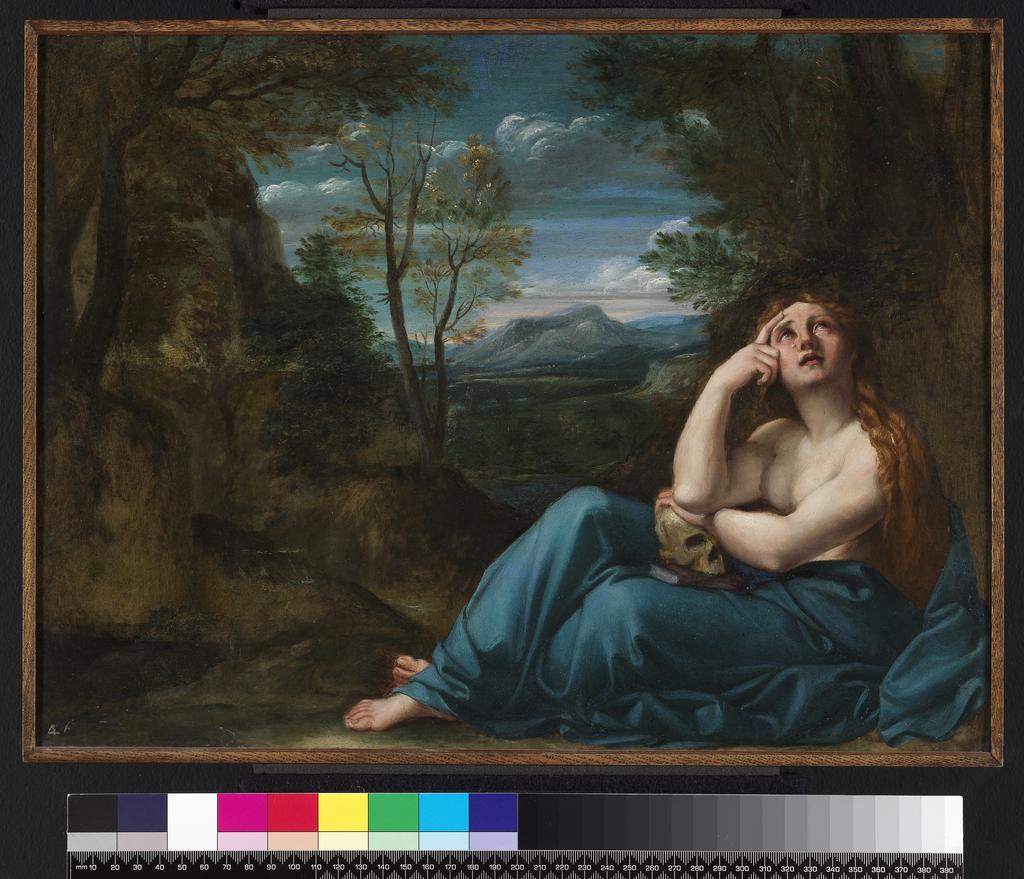
Mary's hair is long but it does not quite cover her breasts. She is at once ascetic and sensuous, admirable for both her piety and her lovely appearance. Hendrik Goltzius' late 16th century drawing in the Fitzwilliam, below [PD.164-1963], shows the same tradition current in Northern European art.
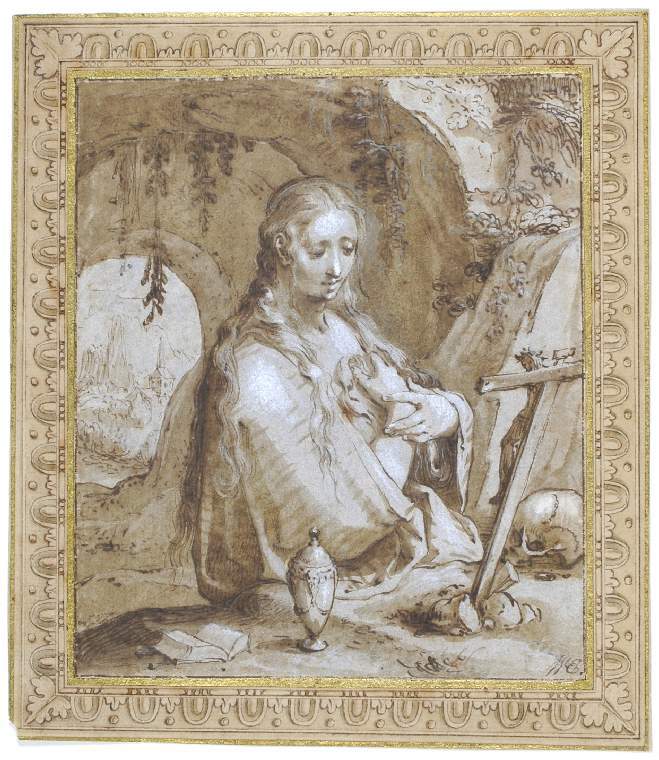
In Medieval art, Mary is sometimes shown as a more convincing hermit, gaunt and unattractive, with hair so long that it covers her whole body. This tradition arose out of her conflation with another reformed prostitute saint, St. Mary of Egypt, whose hairy form we see in the upper right of a page from an early 16th century Netherlandish manuscript made for a Spanish patron, in the Fitzwilliam [Marlay cutting Sp.4].
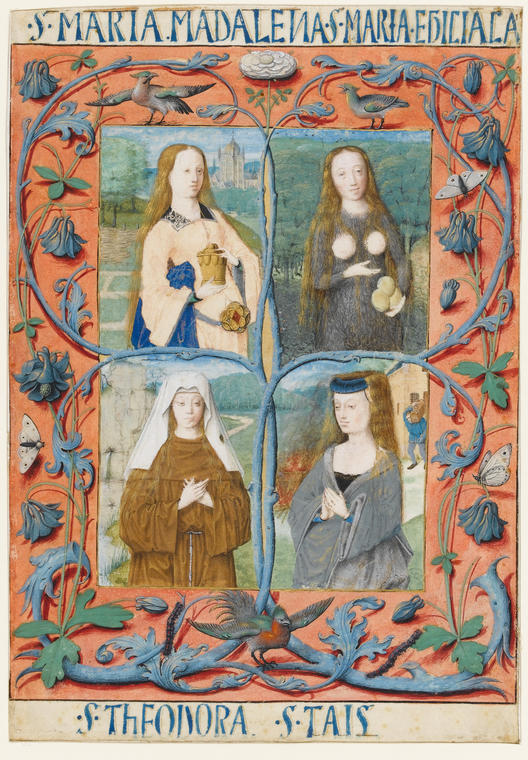
Mary Magdalene is described in the Bible as one of the crowd who follow Christ along the road to Calvary and witness the Crucifixion. From the 13th century she was regularly shown weeping and clinging to the foot of the cross, as in an early 14th century panel in the Fitzwilliam, below [PD.8-1955], painted by an Italian artist known as the Master of Verrochio.
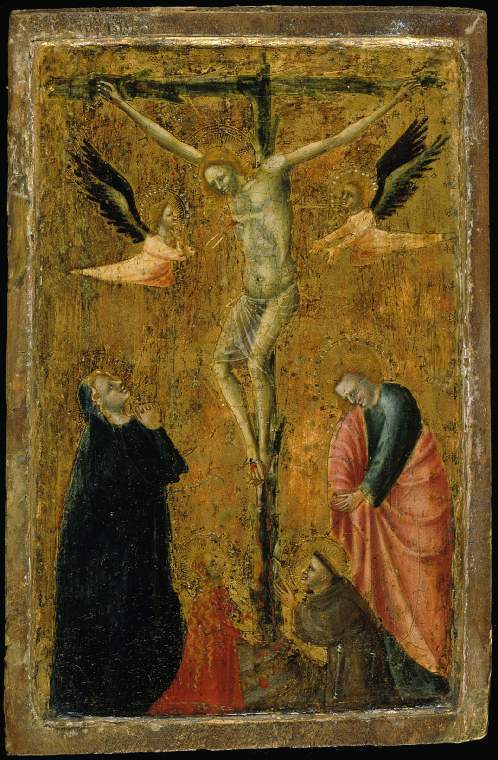
In the 20th century British artist Graham Sutherland followed this tradition in his harrowing post World War II painting, The Deposition of Christ [PD.969-1963].
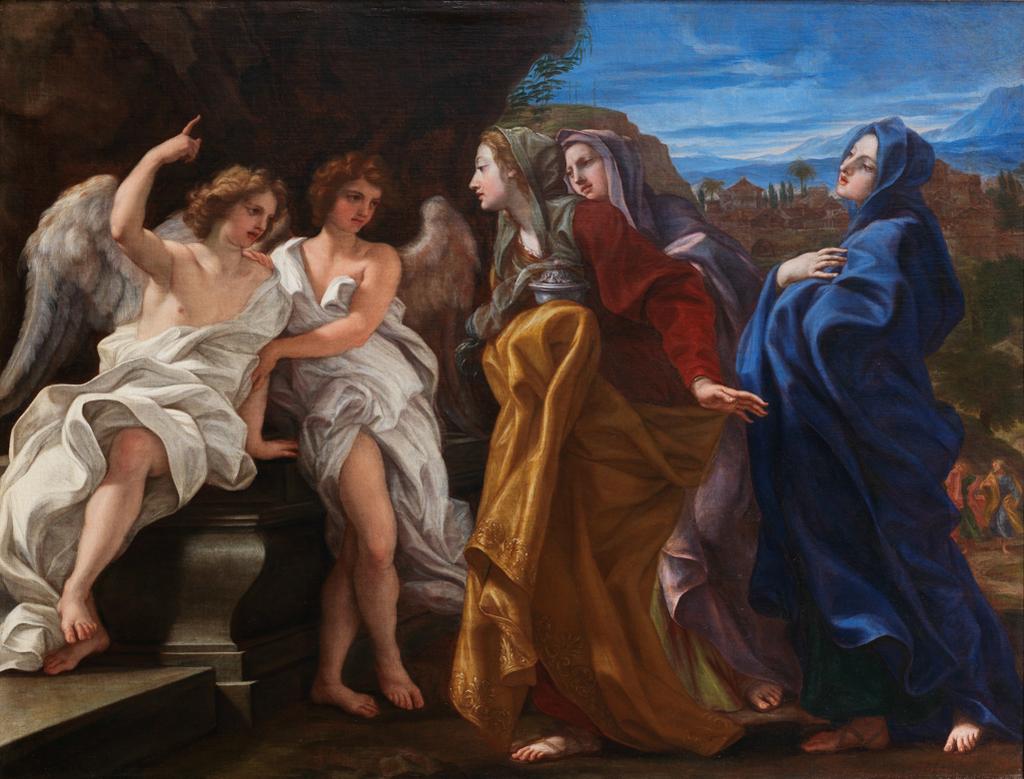
According to the Gospels, the Magdalene is one of the three Maries, along with the Virgin and the mother of James, who visit the tomb of Christ after his burial, bearing spices to embalm his body. There they are met by two angels, who tell them that Christ has risen. The Fitzwilliam owns a beautiful version of this popular scene, above [PD.7-1987], painted in the 17th century by Giovanni Battista Gaulli. Below is a 19th century account of the event by William Blake [PD.31-1949].
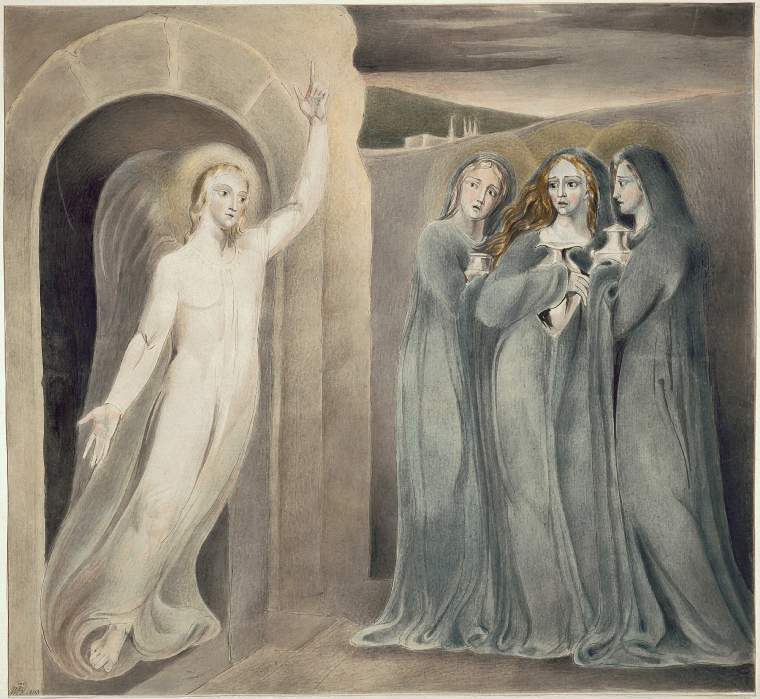
St. John's Gospel specifies that Mary Magdalene came alone to Christ's tomb on the morning after the Crucifixion, and records a poignant encounter between her and the risen Christ. At first she mistakes him for the gardener, but realising the truth she reaches out to touch him. He prevents her and tells her to announce his Resurrection to the disciples.
The words Christ uses in Latin are Noli me tangere - 'do not touch me' - the title given to the type of picture which depicts this moment in a 15th century French manuscript in the Fitzwilliam [MS.22.f.90]. Christ here holds a spade, making Mary's mistaking him for the gardener all the more understandable.
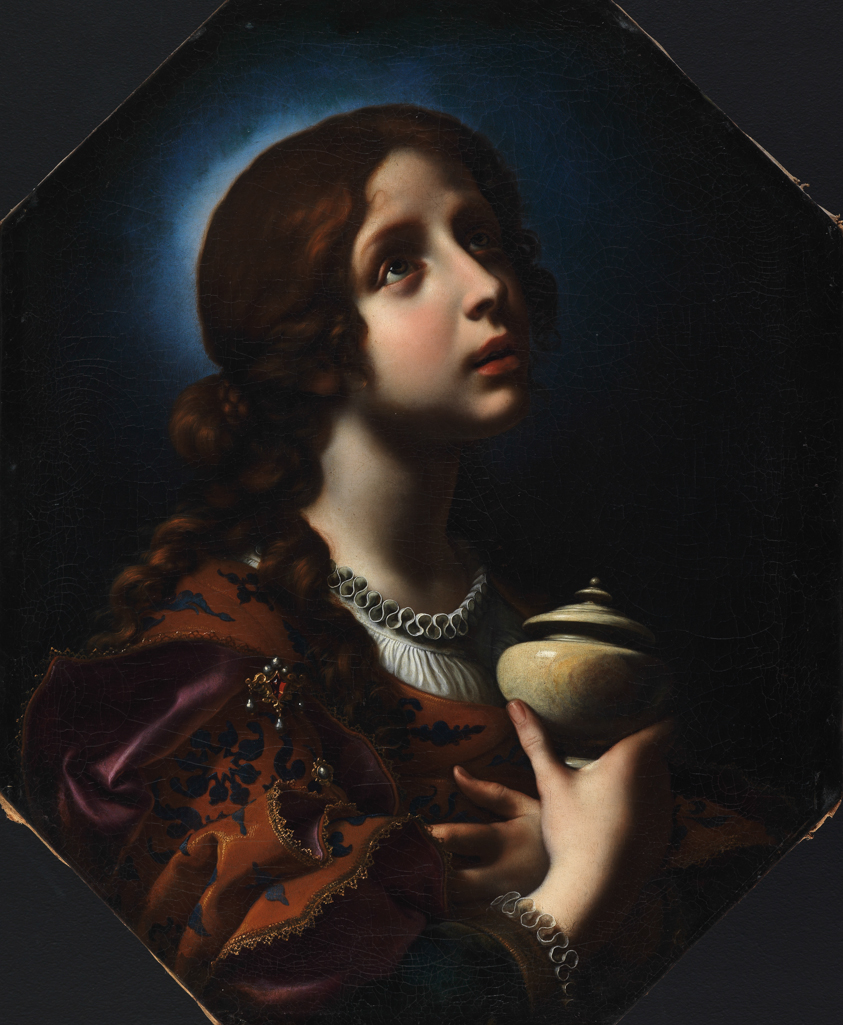
In non-narrative scenes Mary can be recognised by the alabaster jar she carries, a reference to the ointment with which she anointed Christ's feet. In Carlo Dolci's 17th century painting in the Fitzwilliam, above [PD.4-1966], she raises her eyes to heaven and holds the jar to her breast, already sanctified by the halo that glows behind her head.
Other highlight objects you might like
Other pathways and stories you might like
Sign up to our emails
Be the first to hear about our news, exhibitions, events and more…




